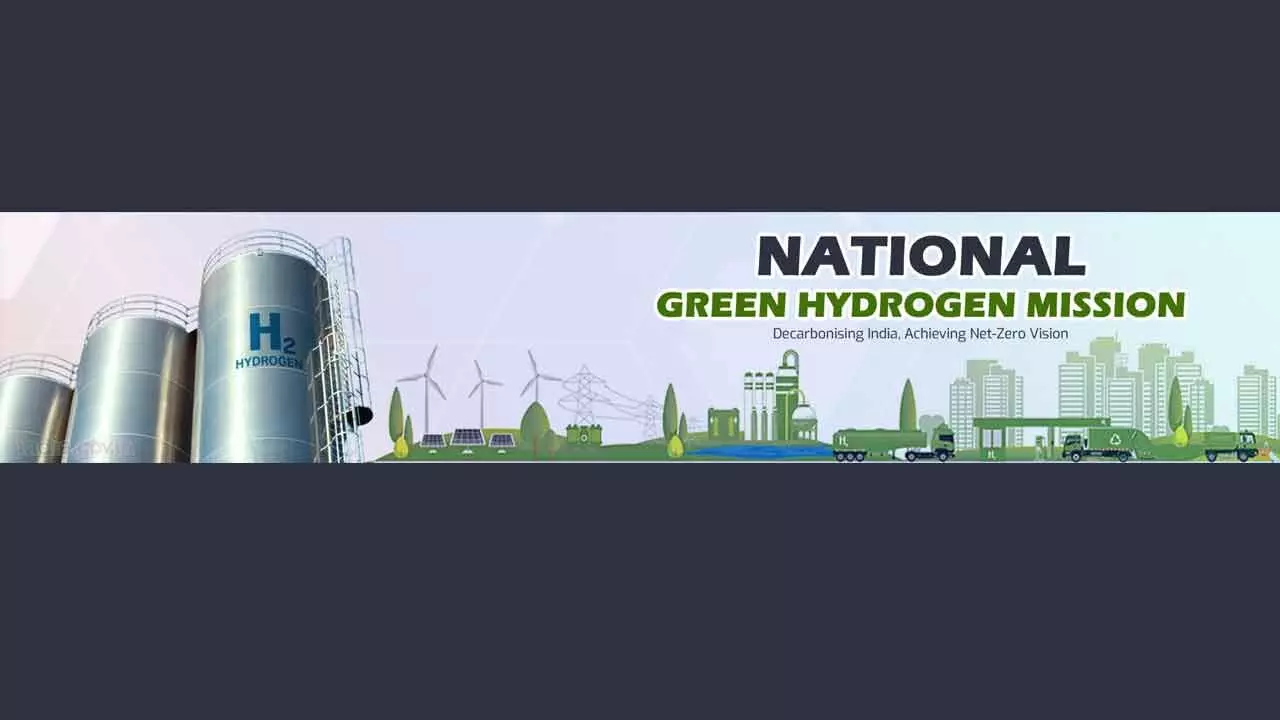Pursuing National Green Hydrogen Mission With Gusto Can Help India Combat Climate Change
Greenhouse gas (GHG) emissions, particularly carbon dioxide, primarily contribute to adverse climate change
Pursuing National Green Hydrogen Mission With Gusto Can Help India Combat Climate Change

India can build its climate resilience by strengthening its disaster management systems, improving early warning and forecasting capabilities, investing in climate-proof infrastructure, developing climate-smart agriculture and empowering local communities
The world’s most populous country, India is poised to become the third largest economy by 2030. Naturally, this means that our energy needs are expected to grow - about 1.5 times faster than the global average in the next 30 years. Instead of appreciating the task at hand and resting on past laurels, it is time to take note of the glaring fact that India is being called as one of the largest polluters and hectored to do more even as a significant portion of the world does less.
Greenhouse gas (GHG) emissions, particularly carbon dioxide (CO2), primarily contribute to adverse climate change. The Intergovernmental Panel on Climate Change (IPCC) paints a dire picture - emissions pose a serious threat since CO2, once released into the atmosphere, can hang for 300 to 1000 years, causing global warming and environmental destruction such as the melting of polar ice caps.
In order to achieve the stated objectives, the world has adopted a strategy that comprises a set of pathways, popularly called ‘climate adaptation’ and ‘climate mitigation’.
Most of this includes shifting to energy sources other than fossil fuels, enhancing energy efficiency through innovative and environment-friendly design, adopting regenerative and environmentally sensitive agricultural practices, as well as protecting and restoring the natural ecosystems.
Climate change strategies continue to be prescriptive in the acceptable mandates for geographically, economically, and climatically different countries. Without cross-learning, many natural ideas relevant to sustainable development, such as consumption patterns, lifestyles, plant vs. meat-based diet are not factored in.
The entire developed world uses toilet paper made of ‘virgin wood’ for the most regular body activity, every single day, multiple times over.
One of the best global sustainability blogs ‘TreeHugger’ states that ‘Making one single roll of toilet paper uses 1.5 pounds of wood, 37 gallons of water and 1.3 kWh of electricity. Many Asian countries provide valuable lessons around these, yet their non-capitalist strategies often remain excluded from mainstream discussions because behavioural and lifestyle change seems to be more difficult than climate change.
Climate is nature’s reality so inherently interconnected in ways that science hasn’t even discovered its nuances. Surprisingly, our accepted pathways seem to ignore this unmissable reality to focus on siloed solutions, unintegrated with natural value chains. A case in point is the substitution of energy to renewables from fossil fuels.
There is hardly any inequivalence foundationally between extracting earth for one resource over another. Solar panels may generate renewable energy, but solar batteries are formed of materials extracted from the earth’s crust, particularly lithium, cobalt, nickel and some rare earth minerals.
According to some estimates, this not only leaves ‘large scars in the landscape’ but requires substantial water, releasing about 15 tonnes of CO2 per tonne of mineral. Bringing the extracted ore to usable forms requires heat between 800-1000 degrees Celsius temperatures that can, ironically, be cost-effectively brought out by only burning fossil fuels.
Cobalt and copper, used extensively in Li-ion batteries, electric vehicles, and mobile phones, have a raging sustainability crisis at the heart of their extraction. About four-fifths of the world’s cobalt supply is buried deep within a single country that is also one of the world’s poorest – the Democratic Republic of Congo. About 80% of the country’s cobalt production is controlled by Chinese companies, who refine it back home and later sell them to battery manufacturers globally.
Climate change and India: The main challenge preventing swift transition is that solar and wind power is cheaper than fossil fuels when the sun shines and the wind blows. Industrialisation and development require power and energy 24/7. Even factoring in four hours of storage makes solar and wind go from the cheapest power available to much more expensive than gas and coal power.
It is said that India is the third largest emitter after the US and China and, therefore, is repeatedly asked to accept a greater share of responsibility.
The government continues to advance its green hydrogen policy with its updated National Green Hydrogen Mission, an important step forward for decarbonisation of refineries and fertiliser plants where currently fossil fuels are used as feedstock. The policy has set a target of five million tonnes per annum of green hydrogen production by 2030. Financial and policy support has been extended for green hydrogen production and adoption in the industries through the green hydrogen purchase mandate.
India can build its climate resilience by strengthening its disaster management systems, improving early warning and forecasting capabilities, investing in climate-proof infrastructure, developing climate-smart agriculture, enhancing health care services, and empowering local communities and institutions.
Global movement on climate change must be accommodative of sovereign choices and economic needs, but centred on individual behaviour.

